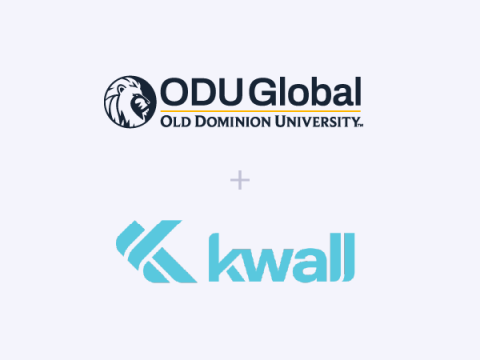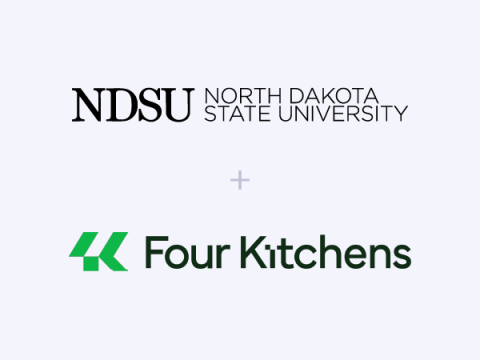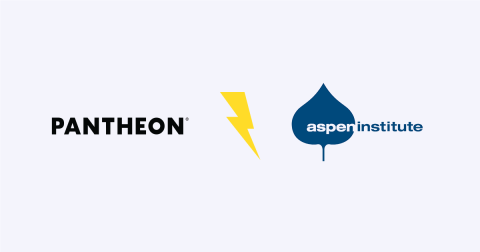UCLA Division of Student Affairs Moves 60+ Websites to Pantheon
Image

The University of California Los Angeles (UCLA) serves 60,000 students through the college and twelve professional schools. As of Fall 2021, UCLA was the most applied-to university in the United States, with 168,000 undergraduate applications alone.
UCLA’s Division of Student Affairs includes campus life, student development, residential life, recreation, counseling, student health, the registrar, and many academic initiatives outside the classroom.
Within the Division’s IT organization, a 5-person team manages 64 public-facing websites, ranging from small departmental sites to high-traffic websites, including Student Affairs, Financial Aid, Student Health, and Registrar.
Legacy Systems Threaten Brand Design and User Accessibility Compliance
The legacy web environment was self-hosted, with no centralized management capability for dozens of departmental websites. Simply maintaining website consistency was impossible, threatening brand design and user accessibility compliance.
The accessibility provisions were especially challenging. The Americans with Disabilities Act (ADA) stipulates that all universities need to provide accessible online experiences to receive federal funding. However, large amounts of unstructured and arbitrary HTML existed across all 64 websites. Without the ability to centrally manage the sites for orphaned HTML, dozens of websites were potentially out of compliance with federal regulations and UCLA branding policies.
In addition to poor accessibility, troubleshooting was time-consuming. When one website showed an error, it was difficult to track down the error, let alone fix it. When multiple websites reported errors, the team had to troubleshoot each one individually. If the team fixed one website, there was no guarantee that the same solution would work for similar errors on other sites.
The infrastructure could not reach the team’s objectives for security, performance, or testing for quality assurance. Even planned downtime was an issue. The team couldn’t fully test an update before performing it, and they would need to scramble to fix issues caused by updates, which meant that there was no way to accurately predict how long an update would take.
Matthew Geddert, Manager of Design and User Experience at UCLA Student Affairs IT, said, “We needed a change. Our overarching mandate was a system that would ensure accessibility and security. We also needed to automate updates and workflows and provide consistent management and performance across all our websites.”
Pantheon and Drupal Change the Game
The UCLA IT team needed assistance with retiring its legacy web environment and adopting Pantheon and Drupal. Pantheon recommended its long-time WebOps partner, Molly Duggan Associates.
Using Pantheon’s migration tools and getting Drupal deployed and configured consistently on 64 sites was straightforward. The newfound consistency and predictability of updates that are an integral component of Pantheon’s WebOps made it possible for the team to meet branding and accessibility guidelines.
The infrastructure ensured high security with automated updates, and centralized management enabled the team to efficiently manage all websites. Geddert said, “Pantheon allowed us to easily separate the websites as sixty-four separate instances. Departmental content editors safely update content without impacting design or accessibility.”
Pantheon also allowed the IT team to centrally manage all websites and develop new features individually or site-wide.
Pantheon lets us safely develop new features for individual websites by copying a production site into Dev, Test, Live environments. From there, we confidently develop, test, and launch features. This capability enables a very compelling use case for us that we could not do on our previous system.
Matthew Geddert, Manager of Design and User Experience at UCLA Student Affairs IT
The team also used Pantheon WebOps tools like Upstreams, Terminus, and Multidev to customize site-wide automated workflows for brand compliance and user accessibility. Later, they adopted Pantheon Autopilot to automate the process of detecting, testing, and deploying updates for the Drupal CMS and modules, which simplified the process and boosted productivity even more.
For example, automated scripts ran across the department websites and automatically identified problem pages with broken styles, incorrect navigation, or orphaned HTML. The scripts fixed the problem, tested the fix, and deployed it across all sites and thousands of pages that display errors. The sites complied with accessibility requirements, and page load speeds shot up.
All sites were initially using Pantheon’s Managed Updates and are now moving to Pantheon’s Autopilot, which automatically detects when new updates are available and performs the updates in an isolated Multidev environment. Advanced Global CDN with WAF/10 efficiently protects and manages multiple websites without using subdomains, while Composer and CircleCI automate the Continuous Integration (CI) testing process.
Why Pantheon: Intensive Automation
Pantheon’s biggest attraction for the team was its high levels of automation and detailed technical documentation that enabled the team to automate their challenging manual processes. Pantheon was also an established organization with proven longevity.
Geddert said, “We felt confident with Pantheon’s reputation and length of time at the top of the market. And when we looked at the wide adoption of Pantheon at other UC campuses and other departments at UCLA this made us feel confident in choosing Pantheon as our platform.”
The Division also cited excellent support options from Pantheon and its partners. The team contracted Pantheon’s Diamond Tier Support program and partnered with Pantheon strategic agency partner Molly Duggan Associates.
Results: Highly Accessible and Highly Manageable
Pantheon performance is consistent for users and developers. Pantheon automation remains fast — even when major background processes are running. The team achieved and maintained their targeted accessibility, performance, and testing metrics, which they could not attain within the legacy environment.
Importantly, the departmental websites maintain their content independence but with centralized design and management that comply with federal and UCLA accessibility guidelines.
Automating management and security updates keeps the site highly secure and easily manageable. Automation also freed IT to pursue strategic initiatives. Geddert said, “What would have previously taken three to four people, or four times as long, can now be done with one person. All of us have more time for high-priority projects."
The key is that as Pantheon adds tools and services to the platform, Pantheon removes even more complexity from our daily operations. Before, we would spend at least half a day on manual maintenance and upgrades. Now, Pantheon just does it.
Matthew Geddert, Manager of Design and User Experience at UCLA Student Affairs IT
Geddert summed up the team’s experience with Pantheon. “Our legacy environment was unsustainable and we spent our time just making sure the platform kept running. With Pantheon’s expertise and automation, we freed up time to work on strategic initiatives to deliver even more value.”


